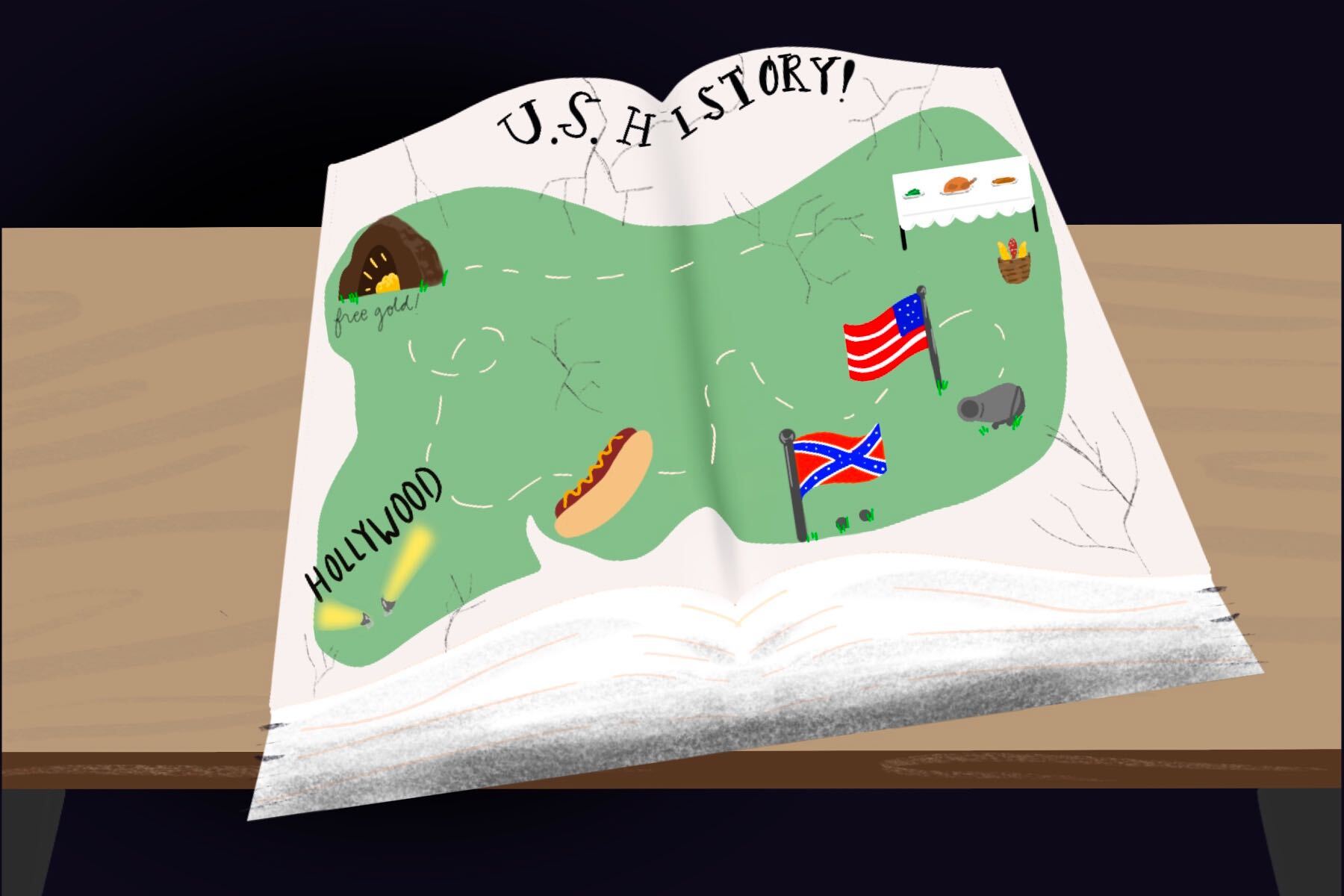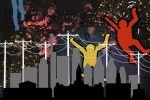The American education system has a serious and detrimental flaw: Its history classes, filled with books authored primarily by white men, focus on their own stories, creating a white-washed, cis-centric and heteronormative narrative that conveniently excludes much of the nation’s insidious past.
These history lessons fail to reflect the country’s diverse foundations and deprive students of crucial learning. While it’s important to have the ability to educate oneself on one’s own time, shouldn’t learning institutions be a starting place for educating youth on diversity?
Recognition, appreciation and representation in the classroom extend well beyond the pages of a textbook and foster a more conscientious, empathetic and aware generation. The issue of inadequate history classes has revealed itself more recently as the Black Lives Matter movement unfolds and as Pride Month comes to a close; Instagram is populated with posts about significant but not widely renowned figures and stories that were not taught in school.
It’s time to change the narratives taught in classrooms. For those like myself who missed out on vital history lessons, here’s a place to start: four pivotal moments in black and queer history that we didn’t learn in school.
1. Juneteenth
June 19 is Juneteenth, or Liberation Day, which commemorates the end of slavery in the United States. It is commonly (and incorrectly) believed that President Lincoln’s Emancipation Proclamation of 1863 freed all enslaved people. However, the executive order was not enforced in Texas due to a lack of Union troops in the formerly Confederate state. Juneteenth marks the day in 1865 — two and a half years after the proclamation — when Major General Gordon Granger arrived in Galveston, Texas, with the message of the war’s end and, ultimately, of freedom.
The exact reason for the delayed information and enforcement of the law is unclear; there are three primary theories: first, the messenger was murdered on the way to Texas; second, slave holders withheld the news to maintain their labor force; and third, federal troops waited to go to Texas so that slave-owners would have one last cotton harvest.
Juneteenth is a day of celebration of freedom in the African American community that often received little attention in the past. With the current human rights crisis and racial climate in the United States, there has been a newfound visibility of the day of remembrance, self-education and appreciation for Black culture and history, as well as a push to make Juneteenth a national holiday.
2. One, Inc. v. Olesen
One, Inc. v. Olesen was the first Supreme Court case centered around homosexuality. The Supreme Court actually ruled in favor of LGBTQ+ rights in the 1958 case, prior to the beginning of the LGBTQ+ movement sparked by the 1969 Stonewall riots. In the case, ONE: The Homosexual Magazine sued the United States government because the post office refused to deliver the magazine, deeming it “obscene” on the basis of the Comstock Laws.
The case first went through an appeals court that declared that the magazine violated obscenity laws before the Supreme Court overturned the decision. The post office had to deliver the magazine that became the first widely distributed queer publication in the United States. While the case is not widely known as a major gay rights case, it was the first instance in which the Supreme Court addressed the Constitutional protection of freedom of speech in regard to homosexuality.
3. The Tulsa Race Massacre
Following World War I, people flocked to Tulsa, Oklahoma, because of its booming oil industry. With a population of more than 100,000 people, the city was segregated, with the majority of black residents living in the Greenwood neighborhood. Black Wall Street was a flourishing business community in the area.
On May 30, 1921, an altercation occurred when a Black teenager, Dick Rowland, rode in an elevator at the Drexel Building with the operator — a young white woman named Sarah Page. During the ride, Page screamed and the police were called as Rowland fled. Rowland was arrested the next morning.
While the events inside of the elevator were unclear and the investigation was still underway, rumors flooded the white community. On May 31, the Tulsa Tribune published an inflammatory report — its front-page headline declared Black man Dick Rowland attempted to rape white woman Sarah Page.
As a result of the report, a white mob went to the courthouse to demand Rowland from the sheriff, who refused and guarded him. Black men arrived to guard Rowland, but they were met by greater masses of white men. Shots were fired and being greatly outnumbered, the Black men returned to Greenwood. Chaos ensued as white citizens shot an unarmed Black man in a movie theater, and looted and burned businesses in Black Wall Street.
Governor Robertson declared martial law and the National Guard arrived, but by that point, the violence had ceased. The Tulsa Race Massacre had lasted for only 24 hours, but 35 blocks of Greenwood lay in ruins, while over 800 people were injured and 36 deaths were reported at the time. Historians today believe that as many as 300 people died in the race riot, making it one of the deadliest riots in U.S. history.
4. Christine Jorgensen
Christine Jorgensen was a pioneer in transgender advocacy as the first American to publicly announce her sex reassignment surgery in the 1950s. Following her time as a clerk in the U.S. Army during World War II, Jorgensen traveled to Denmark for her transition. When she returned home to the United States, her story had made headlines.
Jorgensen admitted to feeling uncomfortable with the publicity at first, but soon adapted and decided, “If they wanted to see me, they would have to pay for it.” She became a nightclub entertainer, toured universities to speak and published her book “Christine Jorgensen: A Personal Biography” in 1967.
Jorgensen opened the minds of the American public to transgenderism and her wit, charm and passion to educate made her a beloved public figure. Jorgensen started a conversation about gender identity and challenged the traditional belief of gender as a permanent binary, instead redefining it in terms of psychological sex and biological sex.
“I did my own thing, and I’ve got to admit I did it only for myself,” she said in a 1981 interview for Hour Magazine. “I had no idea it was going to affect the rest of the world.”

















